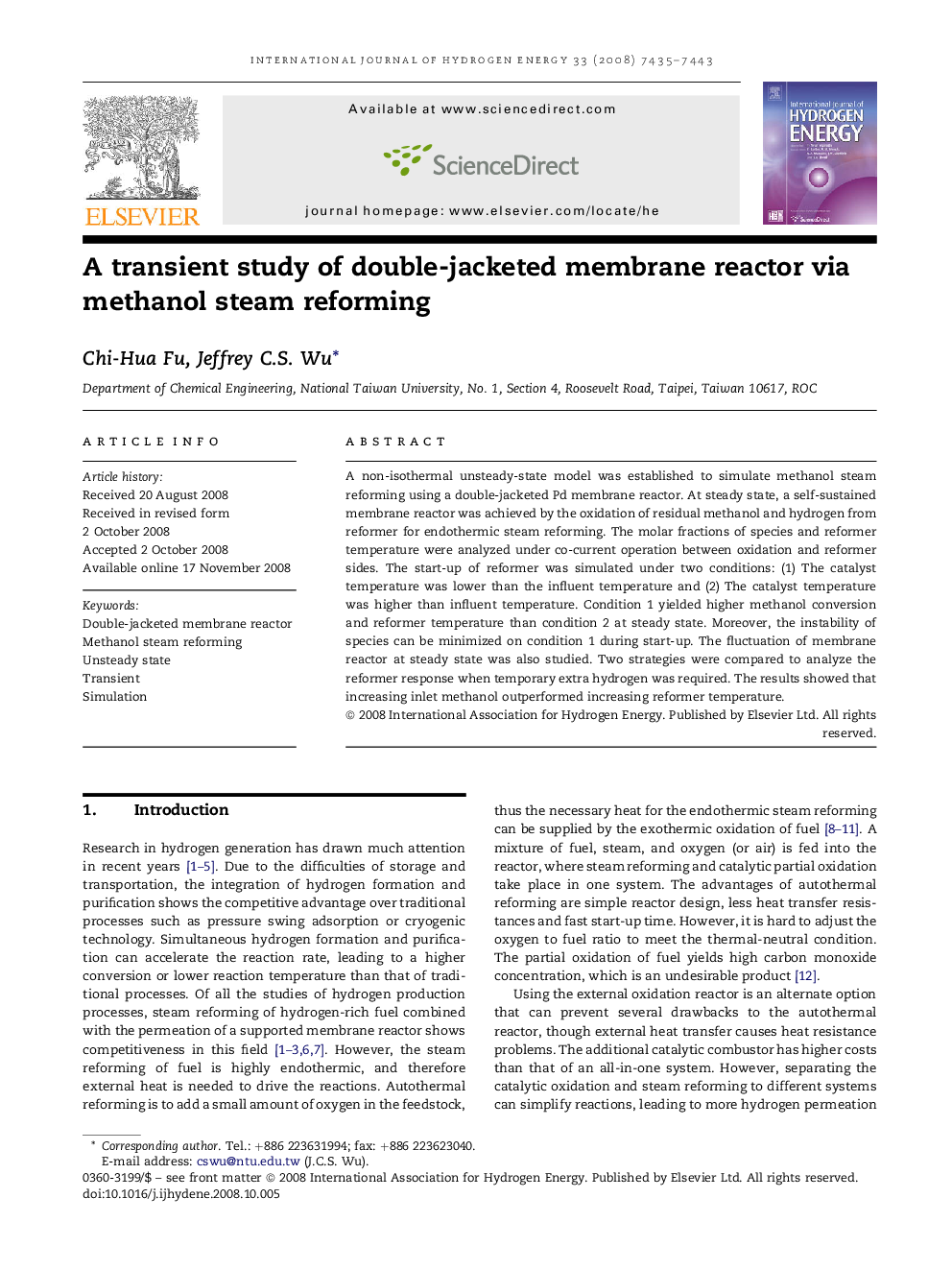| Article ID | Journal | Published Year | Pages | File Type |
|---|---|---|---|---|
| 1281340 | International Journal of Hydrogen Energy | 2008 | 9 Pages |
A non-isothermal unsteady-state model was established to simulate methanol steam reforming using a double-jacketed Pd membrane reactor. At steady state, a self-sustained membrane reactor was achieved by the oxidation of residual methanol and hydrogen from reformer for endothermic steam reforming. The molar fractions of species and reformer temperature were analyzed under co-current operation between oxidation and reformer sides. The start-up of reformer was simulated under two conditions: (1) The catalyst temperature was lower than the influent temperature and (2) The catalyst temperature was higher than influent temperature. Condition 1 yielded higher methanol conversion and reformer temperature than condition 2 at steady state. Moreover, the instability of species can be minimized on condition 1 during start-up. The fluctuation of membrane reactor at steady state was also studied. Two strategies were compared to analyze the reformer response when temporary extra hydrogen was required. The results showed that increasing inlet methanol outperformed increasing reformer temperature.
